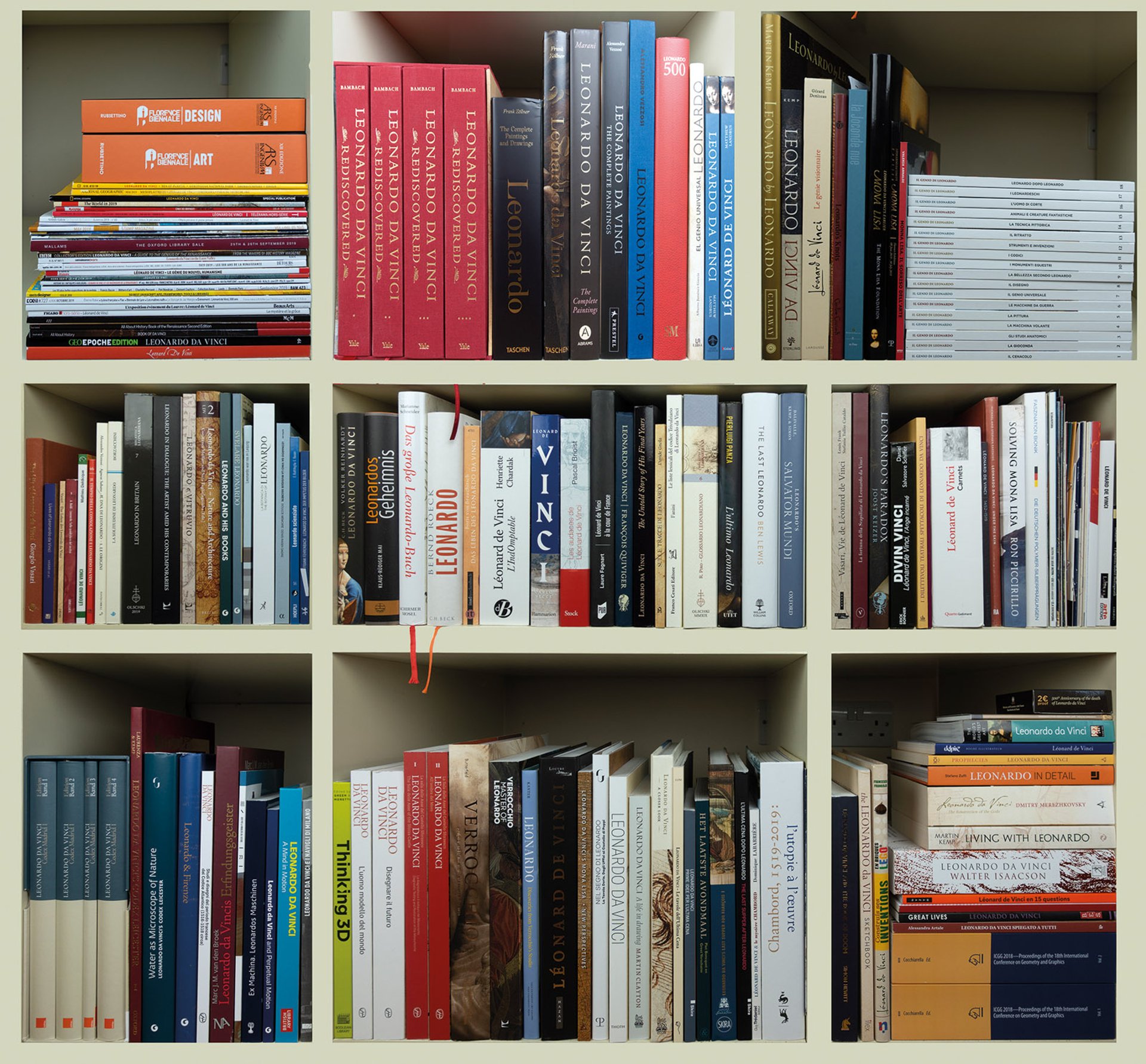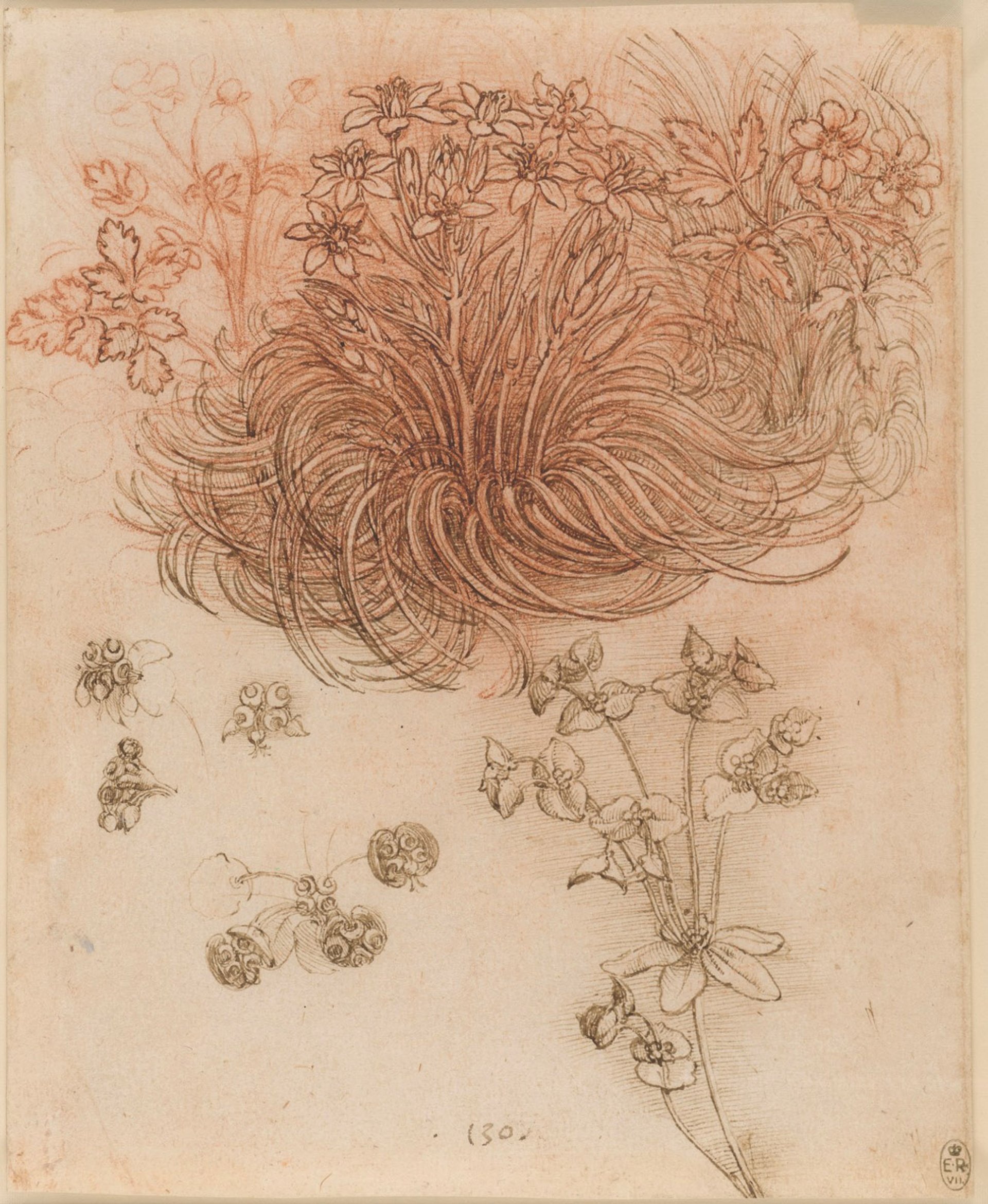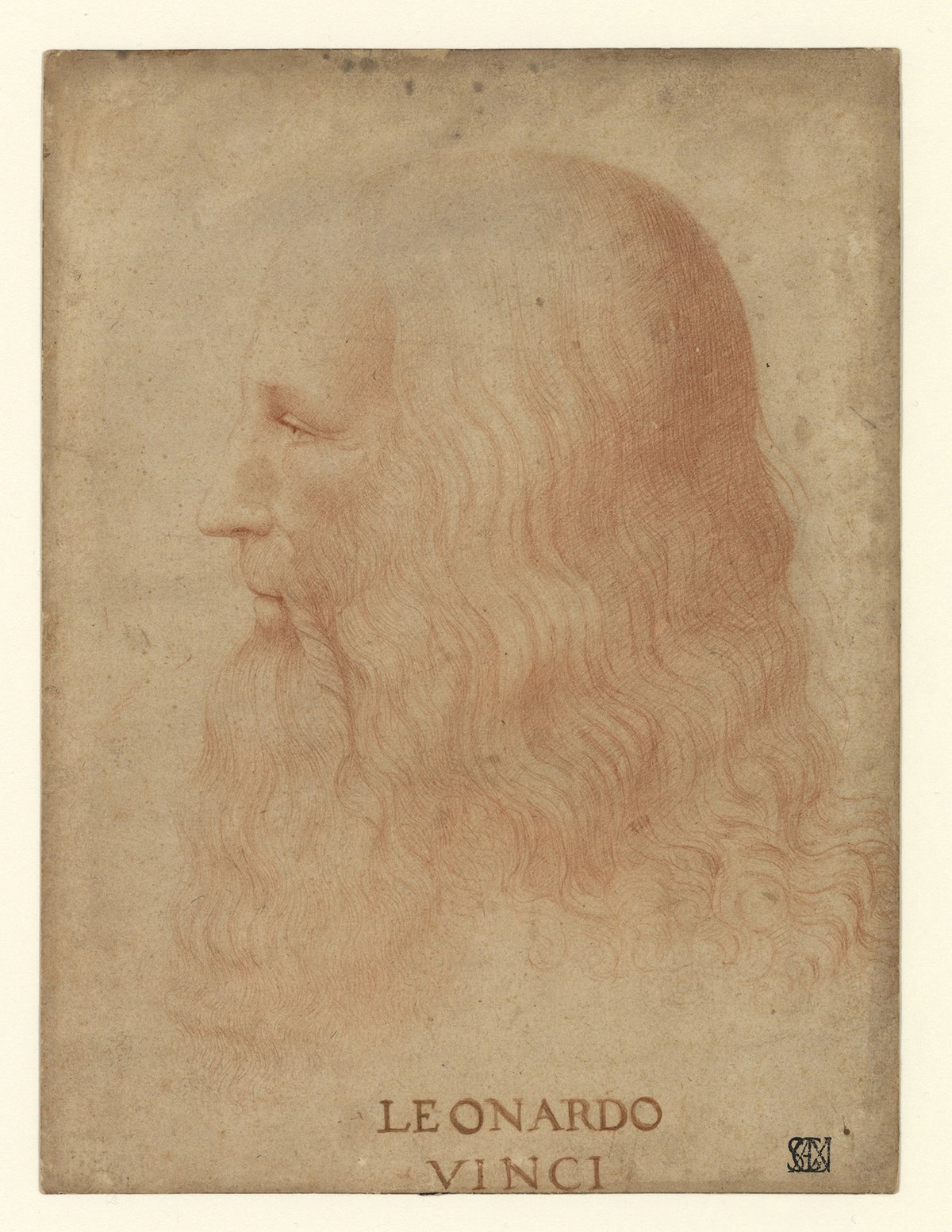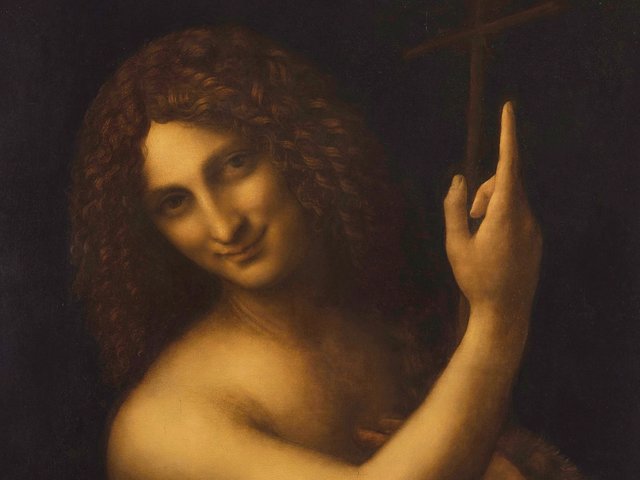There is a 400-year-old tradition in the popularity of publications related to Leonardo da Vinci during years of his birth and death anniversaries, though the number of Leonardo-related publications between late 2018 and December 2019 surpasses the number in all previous anniversaries combined. At least 250 books in European languages have been published during this period, most of which are potentially in association with Leonardo’s 500th death anniversary.
Whereas republished or slightly revised editions make up a tenth of this group, there are noticeably new contributions in most of the other books. More than 50 biographies, originating in several European languages, offer different perspectives on the life of the polymath. Over 50 scholarly and critical monographs and volumes of collected essays offer new approaches to the state of the research on Leonardo, his associates, and the reception of his work. In keeping with the majority of Leonardo’s surviving work of more than 6,000 notes and drawings, more than 50 books focus primarily on his approaches to science, technology and/or anatomy, whereas around 40 books focus exclusively on painting and eight look only at drawings. Leonardo’s written work, which includes his notes for planned books on painting, mechanics, anatomy flight, water, geometry and other subjects, is the main subject of at least 15 publications.
Of course, there are overlapping topics in many of the books, thanks to Leonardo’s method of working across disciplines. Because his multi-disciplinary approaches connect him with a broad audience, this “universal Leonardo” was also the subject of over 25 “bookazines”, as well as magazines with significant sections on him. At least 25 books address the reception of Leonardo, from the time of the mid-16th-century biographer, Giorgio Vasari, to the present. Although more than 20 exhibition catalogues contribute significant recent scholarship, there have been numerous Leonardo-related exhibitions with catalogues that are not added to the 250 books noted here. Moreover, dozens of essays presented at recent conferences and academic meetings are scheduled for publication next year.
This is also an important year of significant updates to catalogues raisonnés of Leonardo’s work. For example, updates on the Louvre Virgin and Child with St Anne (1503-19) and the recently attributed Salvator Mundi painting (around 1500) are in extended prefaces of Frank Zöllner’s 2018 Leonardo da Vinci: the Complete Paintings and his 2019 Leonardo: the Complete Paintings and Drawings (co-written with Johannes Nathan). These are among the first scholarly assessments of the Salvator Mundi, three books on which have been published since autumn 2018. (More on this below.)
Pietro Marani also discusses “Salvator Mundi attributed to Leonardo” and 20 years of significant updates on several paintings in the second edition of his Leonardo da Vinci: Complete Paintings (Revised), the first edition of which dates to 1999. It opens with an impressively concise summary of updates on chronology, style, identities and attributions for more than eight paintings, including Verrocchio’s Madonna and Child with Two Angels at the National Gallery in London, the Polish government’s Lady with an Ermine (1489-90), the Louvre Mona Lisa (1503), the New York Madonna of the Yarnwinder, the London Virgin of the Rocks (around 1491/92-99 and 1506-08), the Louvre Virgin and Child with St Anne and the Prado Mona Lisa (1503-19). These updates, and many unusual approaches, are in Alessandro Vezzosi’s Leonardo da Vinci: the Complete Paintings in Detail, where he offers his assessments of painting details with relatively minimal footnotes. Scholars may not be in general agreement about some of his propositions, such as attributions of La Bella Principessa to Leonardo and the Battle of Anghiari (Tavola Doria) copy potentially to Leonardo’s workshop, or that Leonardo’s mother was a slave from the eastern Mediterranean, but Vezzosi’s book succeeds as a relatively concise and knowledgeable catalogue raisonné of an extensive body of work on Leonardo’s painting.
For an assessment of the state of the research, look first to the most thorough catalogue raisonné to date: Carmen Bambach’s Leonardo da Vinci Rediscovered, which assesses all aspects of Leonardo’s work in three substantial volumes, along with a fourth volume of footnotes, an exhaustive bibliography and a substantial, detailed index. Whereas most Leonardo biographies are insufficient in scope and/or research for university courses that address Leonardo, Bambach’s work solves both traditional problems, thereby providing the best available Leonardo biography. One may, however, wish to read each volume with the volume of footnotes at one side, to see the updates to previous scholarship as well as the dialogue with other scholars in the footnotes about new dates, attributions and interpretations, much of which should spark additional discussions for years to come.
Most biographies are, however, easier to carry and read while travelling, numerous examples of which were published this year. Several new translations of Vasari’s mid-16th-century biography of Leonardo offer new interpretations in several European languages. For example, Louis Frank’s and Stefania Tullio Cataldo’s translation and commentary, Giorgio Vasari: Vie de Léonard de Vinci, helps locate Vasari’s resources on Leonardo as primarily focused on the theory and practice of painting, and that Leonardo’s approaches to other disciplines were often in the service of this primary interest. More informative of Vasari than of Leonardo, this approach was nonetheless developed with the help of Francesco Melzi, Leonardo’s former student, who allowed Vasari to see before the 1556 edition of the Lives an important selection of Leonardo’s drawings and notes. The recent translation by Martin Kemp and Lucy Russell of The Life of Leonardo da Vinci by Giorgio Vasari shows with brown-coloured text the significant additions by Vasari to the 1556 edition of his Lives, apparently after the advice of Melzi.

Matthew Landrus’s bookcase heaves with the recent additions to the vast canon of Leonardo publications
Among the new biographies, those by Pascal Brioist (Les audaces de Léonard de Vinci), François Quiviger (Leonardo da Vinci: Self, Art and Nature) and Bernd Roeck (Leonardo: Der Mann, der alles wissen wollte) offer new ways of thinking about Leonardo. Brioist develops a historical trajectory of Leonardo’s heroic and courageous way of quickly adapting to difficult projects and requirements of self-promotion while working for the most powerful people of the time. Also addressing Leonardo’s rapid professional development as a courtier and intellectual contributor, Quiviger focuses instead on Leonardo’s successful methodology at court for developing a diverse range of projects in the visual and technical arts, along with studies of nature. Roeck’s approach to “the man who wanted to know everything” addresses with substantial original research Leonardo’s search for improvements and innovation in his many projects. All three biographies are about the usefulness of Leonardo’s way of thinking, for his professional work and, by implication (and as partially indicated in the books), for ours.
As a critical approach that also addresses Leonardo’s way of thinking, Joost Keizer’s Leonardo’s Paradox: Word and Image in the Making of Renaissance Culture, examines the interplay of word and image in Leonardo’s work. He sees paradoxes as central: for example, a painting can lead to a better understanding of nature, or the meaning of an image can depend on its association with certain words. Though not necessarily part of Leonardo’s vocabulary for inventive processes, paradoxes are part of his work.
Important critical approaches to Leonardo’s biography include Laure Fagnart’s Léonard de Vinci à la cour de France and Jan Sammer’s Leonardo da Vinci: the Untold Story of his Final Years. A specialist on Leonardo’s work for French patrons and his reception in France, Fagnart provides a thoroughly researched assessment of the legacy of Leonardo’s work in French Milan and France, from Louis XII to Louis XIV (around 1500-1695). Ten years ago, Sammer presented his research on the discovery of a letter from Francis I on 14 March 1516 that invited Leonardo to France. Additional archival research since then has resulted in his biography of the final 15 years of Leonardo’s life, and thus a substantial contribution to Leonardo scholarship.
Conferences in 2015 and 2016 resulted in three important volumes of collected essays this year. Leonardo in Dialogue: the Artist Amid his Contemporaries is part of a series of meetings and publications at the Kunsthistorisches Institut in Florenz. It offers an unusual approach whereby most of the writers are not Leonardo specialists and their essays address especially the work of his contemporaries. Leonardo da Vinci: Nature and Architecture, edited by Constance Moffatt and Sara Taglialagamba, is the second volume of their Leonardo Studies series, with essays written mainly by specialists on his approaches to natural properties and nature, and in part two, architecture. As the seventh volume of the important Biblioteca Leonardiana, Studi e Documenti series, Leonardo in Britain: Collections and Historical Reception, edited by Julia Barone and Susana Avery Quash, provides new research. It includes essays by 19 Leonardo specialists, many of whom are also curators of collections that have works by him. One of these —Martin Clayton—organised this year’s blockbuster exhibition at The Queen’s Gallery, Buckingham Palace, and helped with several additional exhibitions in the UK. Clayton’s Leonardo da Vinci: a Life in Drawing discusses 195 drawings, most of which were lent to museums and galleries in batches of 12 each during late 2018 and early 2019, after which they were returned to The Queen’s Gallery to exhibit together. Not since 1952 had the best drawings of the Royal Collection Trust—arguably the finest group of presentation drawings of Leonardo’s oeuvre—been on display in one place. Addressing the latest research on Leonardo’s work, the catalogue also discusses the scientific scans by Alan Donnithorne of the surfaces of the drawings and their preparatory marks. Donnithorne discusses this ground-breaking work in more detail in Leonardo da Vinci: a Closer Look.

Leonardo’s Star of Bethlehem (1506-08) is in the Louvre’s current show Royal Collection Trust/© Her Majesty Queen Elizabeth II 2019
Another group of Leonardo’s best presentation drawings is in his Codex Madrid I, which appears to be a portion of his Book on the Science of Mechanics, which Luca Pacioli praised in 1496. Dietrich Lohrmann and Thomas Kreft have produced an exceptional three-volume translation and analysis of this volume in Leonardo da Vinci: Codex Madrid I: Edition und Kommentar, and have included a facsimile volume with blue numbers printed next to the drawing sections that are translated in volumes two and three. This is a ten-year project, in German, much of which the authors will also make available online.
Although not expected to go online, another four-volume, ten-year project on one of Leonardo’s notebooks—his Codex Leicester—is currently in press, and should be available soon. The first volume of Leonardo da Vinci’s Codex Leicester: a New Edition by Domenico Laurenza and Martin Kemp is available and contains a facsimile of the Codex. Soon to join are volumes with interpretive essays (vol. 2), transcription and translation (vol. 3), and paraphrase and commentary (vol. 4). This work should make more easily accessible the state of the research on the Codex Leicester.
Books that address specific paintings, such as the Mona Lisa, the Last Supper and the Salvator Mundi, as well as copies of those works, have also appeared. Late last year, Pierluigi Panza published L’ultimo Leonardo, which offers a relatively thorough assessment of international news regarding the Salvator Mundi, though without footnotes, bibliography or index. In any event, his work is not mentioned in Ben Lewis’s The Last Leonardo, or in Leonardo’s Salvator Mundi and the Collecting of Leonardo in the Stuart Courts, by Margaret Dalivalle, Martin Kemp and Robert Simon. Lewis’s book is a “yarn” (as he calls it) that unfolds with interesting information about the Salvator Mundi and events surrounding it, developed with information collected from interviews and analyses of the available discussions. It is not a direct investigation of the painting and its history, but contains useful information. More recently, Dalivalle, Kemp and Simon have offered a direct assessment of the painting and its history, covering Simon’s approaches to its purchase, conservation and sale, along with Kemp’s case for a connoisseurial assessment of the painting as an autograph work by Leonardo, followed by Dalivalle’s substantial contribution on collecting in the Stuart courts. This last section helps locate half-length paintings of Christ by Leonardo or an associate first in the collection of Charles I or Charles II, one of which may be the Salvator Mundi that is attributed to Leonardo.
Interesting books that do not necessarily fit the categories above include, of course, exhibition catalogues, like the Louvre’s, Léonard de Vinci edited by Vincent Delieuvin and Louis Frank, and for the La Joconde nue exhibition at Musée Condé, edited by Mathieu Deldicque, Vincent Delieuvin and Guillaume Kazerouni. Both document substantial new scholarship, developed in part for the anniversary and new exhibitions. Moreover, Piet Boncquet and Greet Verschatse published the first major monograph—Het Laatste Avondmaal naar Leonardo da Vinci: Een wonderlijke geschiedenis—on the exceptional, early 16th-century Last Supper copy that is in Tongerlo, Belgium. Republished volumes, like the classic Léonard de Vinci: Carnets, which first translated Edward MacCurdy’s English version of the “Notebooks of Leonardo” into French in 1942, now includes an informative essay by Pascal Brioist and sections with a biographical timeline, new illustrations, an updated bibliography, and a dossier section with additional biographies and essays. Also, a new way of thinking about Leonardo’s work is addressed in Caroline Cocciardi’s Leonardo’s Knots, where she explores the many potential variants drawn by Leonardo and his associates. Regarding morphology in Leonardo’s drawings, Leonardo da Vinci—the Language of Faces, by Michael Kwakkelstein and Michiel Plomp, examines Leonardo’s numerous studies of facial expressions, in a manner that significantly updates Kwakkelstein’s previous approaches to the subject, by locating the work in the broader contexts of associated projects and similar works by colleagues.
This period of publishing can be summarised as the most prolific year of Leonardo scholarship, noteworthy for interesting approaches to Leonardo’s way of thinking.
• Matthew Landrus is a Supernumerary Fellow at Wolfson College and the Faculty of History at the University of Oxford. He has published widely on Leonardo, including Leonardo da Vinci, 500 Years On (2018)
The full list of books
Frank Zöllner, Leonardo da Vinci: the Complete Paintings
Taschen Books, 272pp, £30 (hb)
Frank Zöllner and Johannes Nathan, Leonardo da Vinci: the Complete Paintings and Drawings
Taschen Books, 704pp, £25 (hb)
Pietro Marani, Leonardo da Vinci: Complete Paintings (Revised)
Abrams Books, 384pp, £75 (hb)
Alessandro Vezzosi, Leonardo da Vinci: the Complete Paintings in Detail
Prestel Publishing, 288pp, £42 (hb)
Carmen Bambach, Leonardo da Vinci Rediscovered
Yale University Press, 2,280pp, £360 (hb)
Louis Frank and Stefania Tullio Cataldo, Giorgio Vasari: Vie de Léonard de Vinci, peintre et sculpteur florentin
Editions Hazan, 244pp, £21 (pb)
Martin Kemp and Lucy Russell, The Life of Leonardo da Vinci
Thames & Hudson, 128pp, £10 (hb)
Pascal Brioist, Les audaces de Léonard de Vinci
Stock, 400pp, £20 (pb)
Francois Quiviger, Leonardo da Vinci: Self, Art and Nature
Reaktion Books, 221pp, £16 (hb)
Bernd Roeck, Leonardo: der Mann, der alles wissen wollte
Verlag C.H. Beck, 429pp, £24 (hb)
Joost M. Keizer, Leonardo’s Paradox: Word and Image in the Making of Renaissance Culture
Reaktion Books, 208pp, £25 (hb)
Laure Fagnart, Léonard de Vinci à la cour de France
Presse /universitaires de Rennes, 275pp, £26 (hb)
Jan Sammer, Leonardo da Vinci: the Untold Story of his Final Years
Jan Sammer, 320pp, £32 (pb)
Constance Moffatt and Sara Taglialagamba, eds., Leonardo da Vinci: Nature and Architecture (Leonardo Studies 2)
Brill, 431pp, £130 (hb)
Juliana Barone and Susana Avery Quash, eds., Leonardo in Britain: Collections and Historical Reception
Olschki Editore, 456pp, £65 (pb)
Martin Clayton, Leonardo da Vinci: a Life in Drawing
Royal Collection Trust, 256pp, £18 (hb)
Francesca Borgo, Rodolfo Maffeis and Alessandro Nova, eds., Leonardo in Dialogue. The Artist Amid his Contemporaries
Marsilio Editore, 472pp, £33 (pb)
Alan Donnithorne, Leonardo da Vinci: a Closer Look
Royal Collection Trust, 204pp, £50 (hb)
Dietrich Lohrmann und Thomas Kreft, eds., Leonardo da Vinci: Codex Madrid I: Edition und Kommentar
Böhlau Verlag, 4 vols, 1,238pp, £250 (hb)
Domenico Laurenza and Martin Kemp, eds., Leonardo da Vinci’s Codex Leicester: a New Edition: Volume I: The Codex
Oxford University Press, 88pp, £18 (hb)
Pierluigi Panza, L’ultimo Leonardo: storia, intrighi e misteri del quadro più costoso del Mondo
UTET, 220pp, £17 (hb)
Ben Lewis, The Last Leonardo
William Collins, 416pp, £20 (hb)
Margaret Dalivalle, Martin Kemp and Robert Simon, Leonardo’s Salvator Mundi and the Collecting of Leonardo in the Stuart Courts
Oxford University Press, 383pp, £35 (hb)
Vincent Delieuvin and Louis Frank, eds., Léonard de Vinci
Editions Hazan, 454pp, £30 (hb)
Mathieu Deldicque, Vincent Delieuvin and Guillaume Kazerouni, eds., La Joconde nue
In Fine, 215pp, £25 (hb)
Piet Boncquet and Greet Verschatse, Het Laatste Avondmaal naar Leonardo da Vinci: Een wonderlijke geschiedenis
Sterck & De Vreese, 160pp, £26 (pb)
Leonardo da Vinci, Pascal Brioist, Paul Valéry, Edward MacCurdy, eds, and Louise Servicen translation, Léonard de Vinci: Carnets
Editions Gallimard, 1,656pp, £28.40 (pb)
Caroline Cocciardi, Leonardo’s Knots
Mona Lisa Knot, 130pp, £35 (hb)
Leonardo Da Vinci—The Language Of Faces, Michael Kwakkelstein and Michiel Plomp
Thoth, 224pp, £29 (pb)



